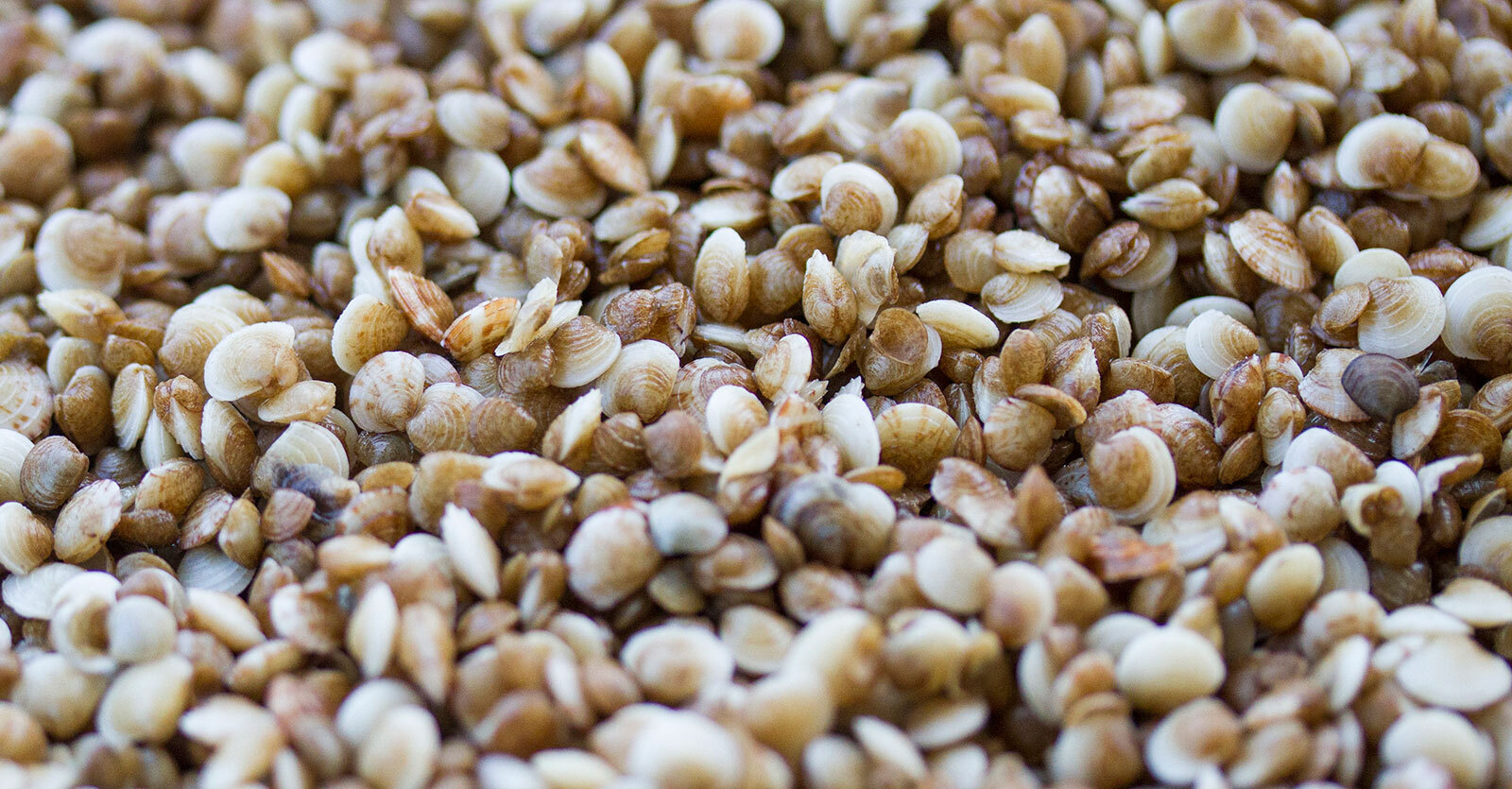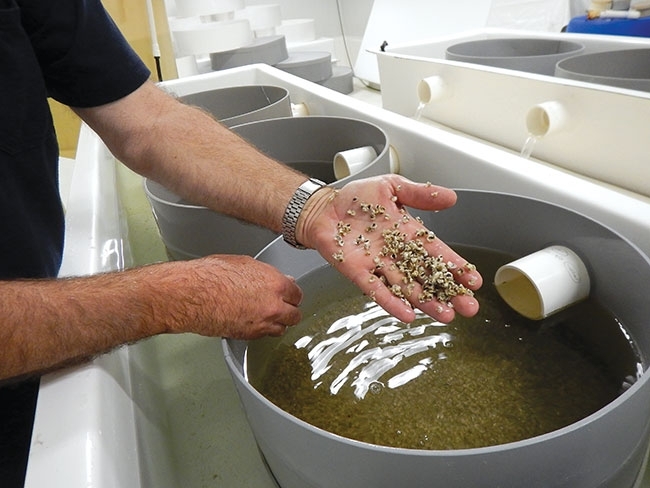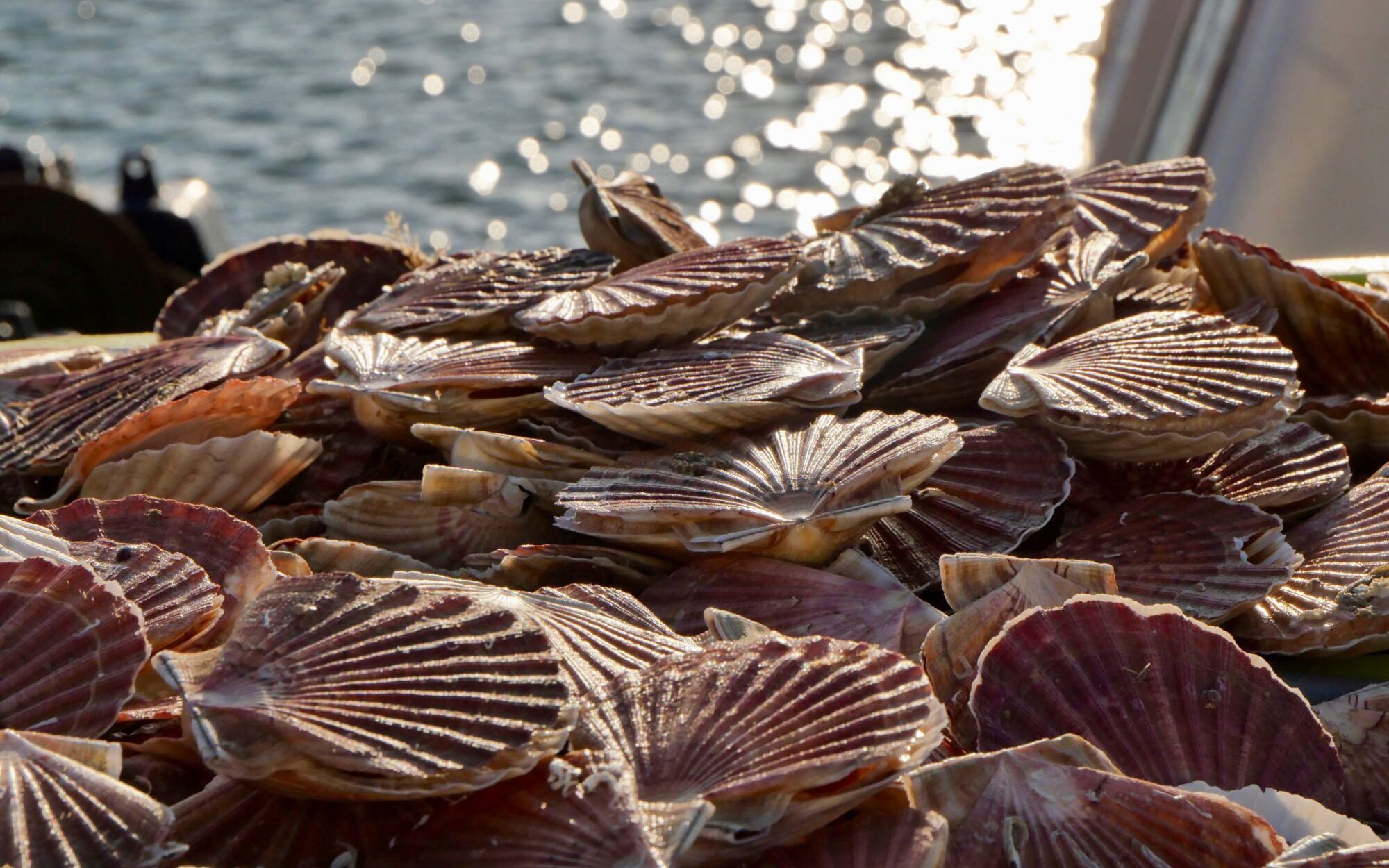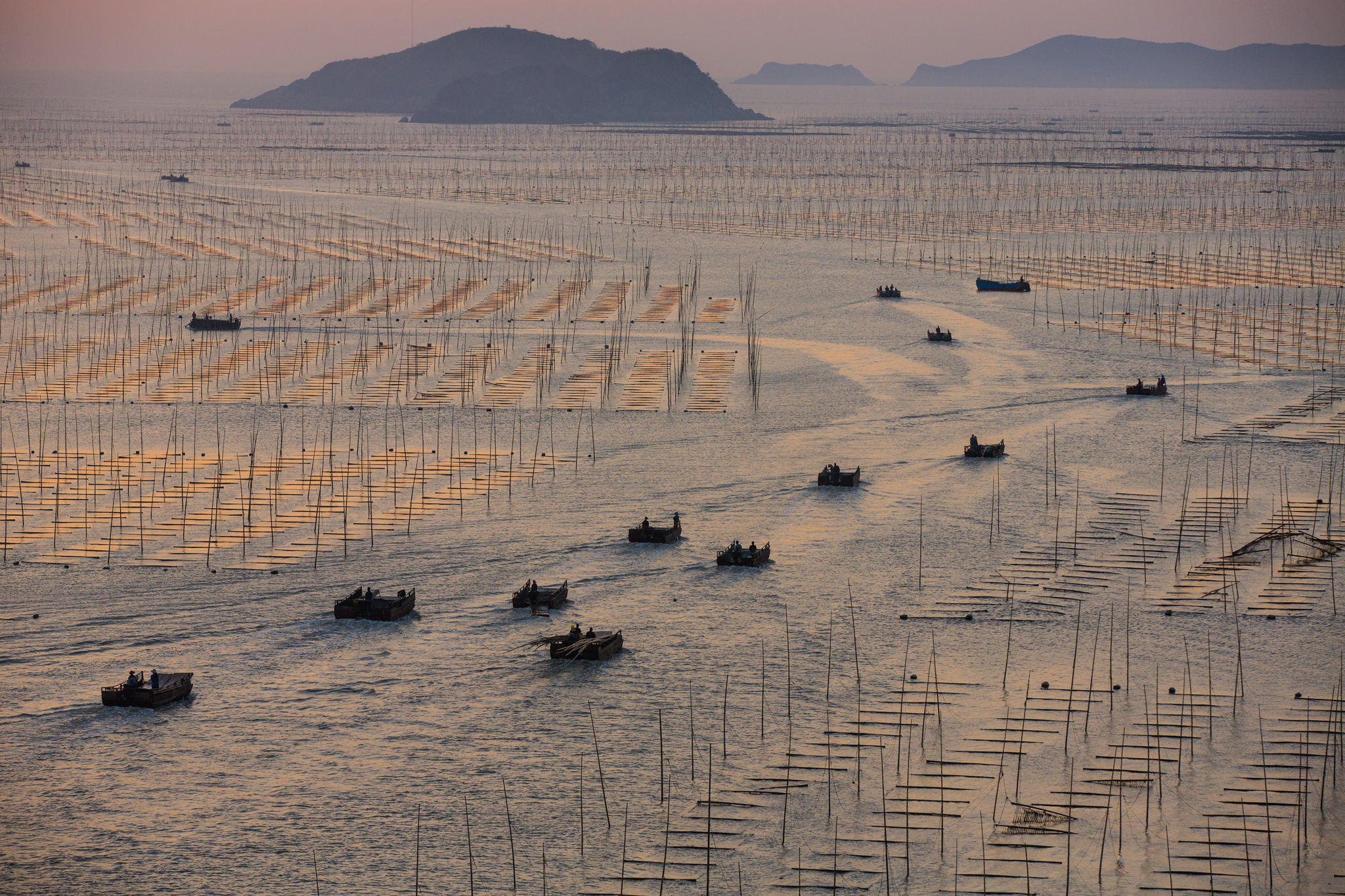Farming the Ocean’s Jewels: How Seashells Are Sustainably Cultivated in Southeast Asia
Seahell Supply on 18th Jul 2025

When you think of seashells, you might picture sun-bleached treasures scattered along the shore, each one whispering tales of the tide. But behind many of those polished beauties—especially the ones used in jewelry, decor, and even aquaculture—there’s a story of sustainable farming rooted in Southeast Asia’s coastal communities.
First Things First. What is Spat?
When tiny little shell fish larva stop floating around in the water and attach themselves to a surface to start growing larger and larger they are called spat. You can read all about spat here. Both shell fish producers who want the meat from these creatures and people who farm the shells themselves use spat as the seeds for their harvest.

Shellfish larva floats freely in the water column in brackish tidal areas. They are searching for a substrate to attach to. Usually a type of rock, a tile, or a larger shell. The tiles or shells that hold the spat are secured to frames or in cages and submerged along an intertidal area or suspended from a long line. Shellfish farms can have hundreds of these set ups growing dozens of different shell fish.
Why Southeast Asia?
Southeast Asia is a global hotspot for mollusk farming, producing millions of tonnes of oysters, mussels, clams, and scallops annually. Countries like Indonesia, the Philippines, Thailand, and Vietnam have long coastlines, nutrient-rich waters, and generations of artisanal knowledge that make them ideal for seashell aquaculture.

Sustainable Farming Methods
Seashell farming here isn’t just about harvesting—it’s about harmony with the ocean. Here are the key methods used:
- Floating Long-Line Systems
- Shellfish like mussels and scallops are suspended from ropes or rafts in the water column.
- This method minimizes seabed disruption and allows natural feeding from plankton-rich currents.
- Bottom Culture
- Clams and oysters are placed directly on the seabed or in mesh bags.
- Farmers monitor growth and clean the beds regularly to prevent disease and overgrowth.
- Integrated Multi-Trophic Aquaculture (IMTA)
- Shellfish are farmed alongside seaweed and finfish.
- Each species plays a role: shellfish filter water, seaweed absorbs excess nutrients, and fish provide organic matter—creating a balanced ecosystem.
- Hatchery-Based Seed Production
- Instead of harvesting wild juveniles, farmers use hatcheries to produce shellfish “seed.”
- This reduces pressure on wild populations and ensures genetic diversity and disease resistance.
How Long Does It Take to Grow a Shell?
The time it takes to grow a seashell depends on the species and environment:
|
Species |
Time to Market Size |
Farming Method |
|
Oysters |
1–2 years |
Floating cages, bottom culture |
|
Mussels |
12–18 months |
Rope suspension |
|
Clams |
1–2 years |
Bottom culture |
|
Scallops |
1–2 years |
Hanging nets or trays |
- Shell growth is influenced by water temperature, salinity, and food availability. Warmer waters in Southeast Asia allow for relatively fast growth cycles.
Environmental & Social Benefits
Sustainable seashell farming isn’t just good for business—it’s good for the planet and people:
- Water Filtration: A single oyster can filter up to 50 gallons of water per day, improving coastal water quality.
- Habitat Creation: Shellfish beds support marine biodiversity, acting as nurseries for fish and crustaceans.
- Carbon Sequestration: Shells are made of calcium carbonate, which locks away carbon.
- Livelihoods: Farming provides income for thousands of coastal families, especially women, and helps reduce reliance on destructive fishing practices.

Challenges & Innovations
Despite the benefits, seashell farming faces hurdles:
- Climate Change: Rising temperatures and ocean acidification affect shell formation.
- Pollution: Coastal development and runoff can degrade water quality.
- Disease Management: Farmers must monitor for harmful algal blooms and invasive species.
Innovations like selective breeding, sensor-based water monitoring, and community-led reef restoration projects are helping farms adapt and thrive.
Final Thoughts
In Southeast Asia, seashell farming is more than a livelihood—it’s a legacy. It’s the art of growing beauty from the sea while protecting the ecosystems that sustain it. So next time you hold a shell in your hand, know that it might carry not just the rhythm of the waves, but the heartbeat of a sustainable future.
At Edwards Enterprises we are very selective about how the scallops, turbos, clams, tritons and other seashell products we sell are farmed and produced and we enjoy the fact that so many of these shells are produced the same way now as they were in decades past.

